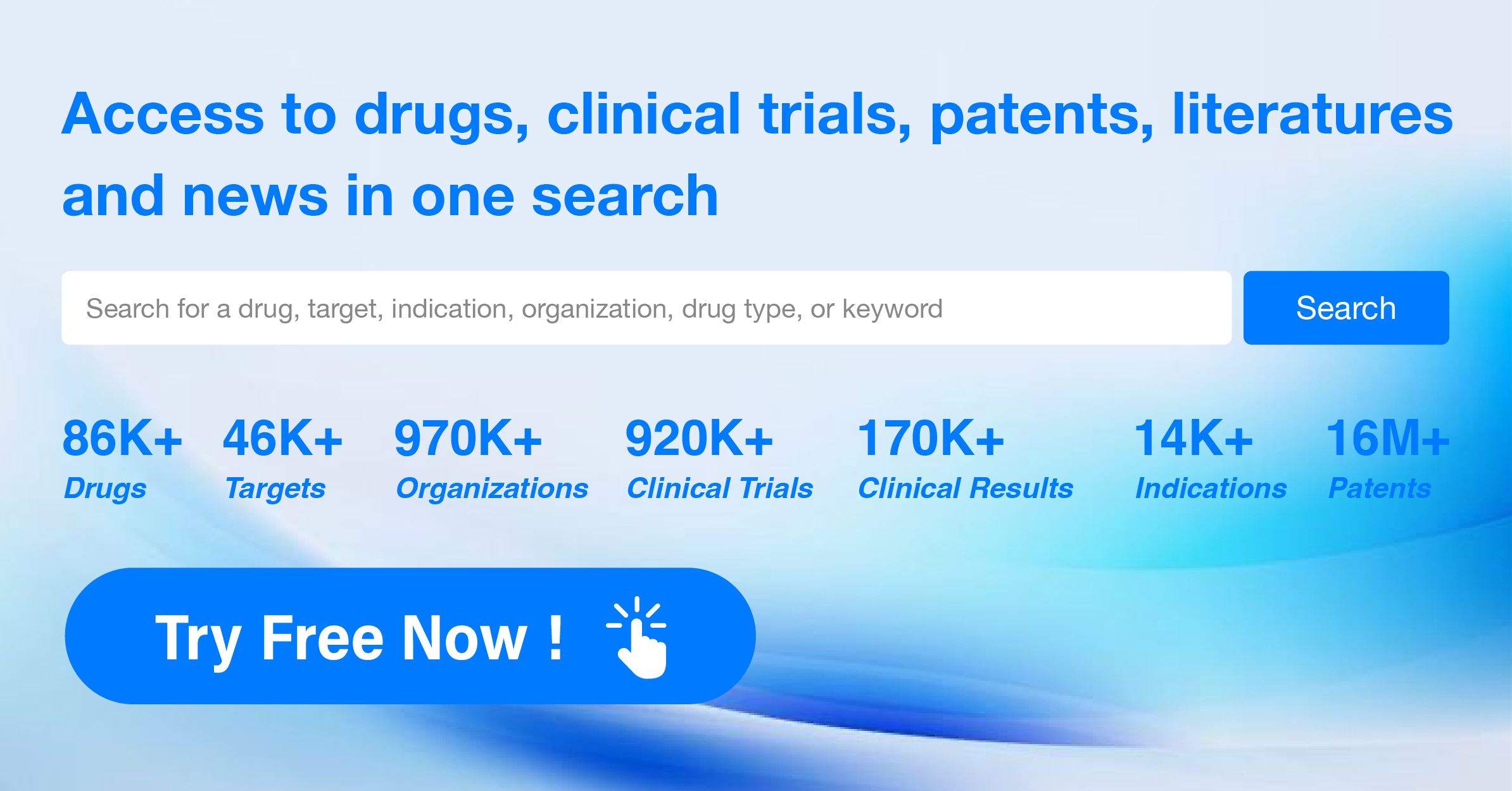Pharma Frontiers: Daily Digest of Global Pharmaceutical News - May 30
1.Roche's PI3Kα Inhibitor Inavolisib Submitted for FDA Approval and Granted Priority Review
On May 29, Roche announced that the new drug application (NDA) for its PI3Kα inhibitor Inavolisib (GDC-0077) has been accepted by the FDA and granted priority review status. The application is for the treatment of adult patients with PIK3CA-mutated, hormone receptor-positive (HR+), human epidermal growth factor receptor 2-negative (HER2-) locally advanced or metastatic breast cancer, who have experienced recurrence within 12 months of completing adjuvant endocrine therapy or after receiving prior endocrine therapy in the adjuvant setting. The Prescription Drug User Fee Act (PDUFA) date is set for November 27, 2024. Last month, this indication also received priority review status from the China National Medical Products Administration (NMPA).
This NDA is primarily based on the positive results from the Phase III INAVO120 study. This study is a randomized, double-blind, placebo-controlled clinical trial (n=325) evaluating the efficacy and safety of Inavolisib in combination with Palbociclib and Fulvestrant compared to placebo combined with Palbociclib and Fulvestrant in adult patients with PIK3CA-mutated, HR+/HER2- locally advanced or metastatic breast cancer. The primary endpoint of the study was progression-free survival (PFS). Results showed that patients in the Inavolisib group had a median PFS of 15.0 months compared to 7.3 months in the placebo group (HR=0.43, P<0.0001), with data demonstrating both statistical and clinical significance. Overall survival (OS) data were not yet mature but showed a clear positive trend (HR=0.64, P=0.0338), with further follow-up and subsequent analyses planned. Approximately 40% of patients with HR+ metastatic breast cancer have PIK3CA gene mutations. This mutation can lead to PI3Kα protein alterations, resulting in uncontrolled tumor growth, disease progression, and resistance to endocrine therapy.
Inavolisib is an oral, highly selective PI3Kα inhibitor that exhibits greater selectivity and potency for PI3Kα compared to other isoforms (PI3Kβ/δ/γ). It is capable of specifically triggering the degradation of the mutant PI3Kα protein. With this unique dual mechanism of action, Inavolisib potentially offers well-tolerated, durable disease control for patients with HR+/HER2-, PI3Kα-mutant advanced breast cancer, and may improve their prognosis.
2.Insmed's Breakthrough Small Molecule Therapy Achieves Primary Endpoint in Phase 3 Clinical Trial, Set for Marketing Application Submission
On May 29, Insmed announced positive top-line results from the Phase 3 clinical trial ASPEN. This global, randomized, double-blind, placebo-controlled study assessed the efficacy, safety, and tolerability of brensocatib in patients with non-cystic fibrosis bronchiectasis. The study met its primary endpoint, with both doses of brensocatib significantly reducing the annualized rate of pulmonary exacerbations (PEs) compared to placebo. Based on these results, Insmed plans to submit a New Drug Application (NDA) for brensocatib to the U.S. FDA in the fourth quarter of 2024. The press release noted that if approved, brensocatib would become the first drug approved for the treatment of bronchiectasis and the first approved dipeptidyl peptidase 1 (DPP1) inhibitor, representing a novel mechanism of action with potential to treat multiple neutrophil-mediated diseases.
The efficacy analysis of the study included 1,680 adult patients and 41 adolescent patients. Regarding the primary endpoint, doses of 10 mg and 25 mg brensocatib reduced the annualized PE rate by 21.1% and 19.4%, respectively, which was statistically significant and clinically meaningful. Brensocatib is an oral, reversible small molecule inhibitor of DPP1. DPP1 is an enzyme responsible for activating neutrophil serine proteases (NSPs) within neutrophils. Neutrophils are the most common type of white blood cell and play an essential role in pathogen killing and mediating inflammation. In chronic inflammatory lung diseases, neutrophils accumulate in the airways, leading to excessive NSP activity, which causes lung tissue damage and inflammation. Brensocatib can reduce tissue damage in inflammatory diseases such as bronchiectasis by inhibiting DPP1 and consequently decreasing NSP activation.This therapy has already been granted Breakthrough Therapy designation by the U.S. FDA for the treatment of non-cystic fibrosis bronchiectasis.
3.Arrowhead's Investigational RNAi Therapy Plozasiran Shows Positive Phase 2b Trial Results
On May 29, Arrowhead Pharmaceuticals announced positive results from its Phase 2b clinical trial MUIR, which investigated the RNAi therapy plozasiran in patients with mixed dyslipidemia. The analysis showed that plozasiran treatment can reduce triglyceride-rich lipoproteins (TRL), a biomarker validated to be associated with an increased risk of atherosclerotic cardiovascular disease (ASCVD). Detailed data were presented at this year's European Atherosclerosis Society (EAS) Congress and simultaneously published in The New England Journal of Medicine.
The MUIR trial is a double-blind, placebo-controlled Phase 2b clinical study targeting adult patients with mixed dyslipidemia. A total of 353 patients were enrolled in the study. These patients had fasting triglyceride levels between 150-499 mg/dL and low-density lipoprotein (LDL) cholesterol greater than 70 mg/dL or non-high-density lipoprotein cholesterol greater than 100 mg/dL.
The analysis showed that plozasiran treatment was associated with triglyceride reduction. At week 24, the placebo-adjusted changes in triglyceride levels for patients receiving doses of 10, 25, and 50 milligrams of plozasiran were -50%, -56%, and -62%, respectively (all p<0.001). Corresponding reductions in APOC3 expression were -57%, -73%, and -79%, which correlated positively with changes in triglyceride levels. The majority of patients randomized to the plozasiran treatment group (79-92%) achieved normal fasting triglyceride levels (below 150 mg/dL).
Plozasiran (ARO-APOC3) is a potential "first-in-class" RNAi therapy targeting the APOC3 gene for the treatment of hypertriglyceridemia. APOC3 is a component of triglyceride-rich lipoproteins and a key regulator of triglyceride metabolism. APOC3 increases blood triglyceride levels by inhibiting lipoprotein lipase-mediated hydrolysis of TRL and hepatic receptor uptake of TRL remnants. The goal of plozasiran treatment is to lower triglyceride levels by downregulating APOC3, thereby restoring lipids to more normal levels.
4.Significantly Improved Patient OS: Merck’s Keytruda Clinical Phase 3 Trial Shows Positive Results
On May 29, Merck (MSD) announced that its blockbuster PD-1 inhibitor, Keytruda (pembrolizumab), achieved positive results in the Phase 3 clinical trial KEYNOTE-522. In this trial, Keytruda was used in combination with chemotherapy as a neoadjuvant pre-surgery therapy and as a standalone adjuvant post-surgery therapy to treat patients with high-risk early-stage triple-negative breast cancer (TNBC). The analysis indicated that the trial met its overall survival (OS) endpoint. According to the press release, compared to chemotherapy alone as a neoadjuvant therapy, Keytruda is the first immunotherapy regimen to statistically significantly improve OS in this patient group when used as both a neoadjuvant combination therapy and a standalone adjuvant therapy.
KEYNOTE-522 is a multicenter, double-blind, randomized clinical trial that enrolled a total of 1,174 patients. Pre-surgery, patients were randomized in a 2:1 ratio to receive either Keytruda plus chemotherapy or a placebo plus chemotherapy. Post-surgery, patients received either Keytruda or placebo as adjuvant therapy. The primary endpoints of the study were pathological complete response (pCR) at the time of surgery and event-free survival (EFS), with OS being a key secondary endpoint. In a pre-specified interim analysis conducted by the independent Data Monitoring Committee, Keytruda demonstrated a statistically significant and clinically meaningful improvement in OS compared to pre-surgery chemotherapy. The safety profile of Keytruda was consistent with previously reported studies, with no new safety signals observed. Detailed data will be presented at an upcoming medical meeting and submitted to regulatory authorities.
The positive OS results announced by Merck build upon the previously reported primary endpoints of EFS and pCR. Previous analysis showed that pCR was observed in 64.8% of patients in the Keytruda plus chemotherapy group (n=260/401), compared to 51.2% in the chemotherapy plus placebo group (n=103/201), an increase of 13.6% (p=0.00055). After a median follow-up of 39 months, the trial met another primary endpoint of EFS, reducing the risk of events or death by 37% compared to the control group (HR=0.63, 95% CI: 0.48-0.82, p<0.001).
5.Reduction of Major Cardiovascular Risk Factor by Nearly 60%! Positive Trial Results Released for Innovative Small Molecule Therapy
On May 29, NewAmsterdam Pharma unveiled promising data from clinical Phase 2 trials, ROSE1 and ROSE2, for its investigational CETP inhibitor obicetrapib in hypercholesterolemia patients at the 92nd European Atherosclerosis Society (EAS) Congress. The analysis demonstrated that obicetrapib, in combination with high-intensity statins, could reduce lipoprotein(a)—Lp(a) levels by up to 57% compared to placebo. Lp(a) is a critical genetic risk factor for cardiovascular disease affecting as much as 20% of the global population. Currently, there are no approved drugs specifically targeting the reduction of Lp(a).
ROSE1 and ROSE2 are Phase 2 trials targeting subjects without cardiovascular disease but with low-density lipoprotein cholesterol (LDL-C) levels >70 mg/dL. In the ROSE1 trial, the median baseline change in Lp(a) was -56.5% in the 10 mg obicetrapib group compared to +4.00% in the placebo group. In the ROSE2 trial, the corresponding changes were -47.2% and +2.3%. Across both trials, over 50% of obicetrapib group participants experienced more than a 60% reduction in Lp(a) levels. Combined analysis showed that adding 10 mg of obicetrapib to high-intensity statins resulted in a significant 57% reduction in Lp(a) levels compared to placebo. According to the abstract, this reduction is notably higher than the results from previous trials involving proprotein convertase subtilisin/kexin type 9 (PCSK9) inhibitors (15-30%), niacin (30%), or other CETP inhibitors (25%).
Obicetrapib is an oral, selective CETP inhibitor. CETP is a protein that transfers cholesterol from high-density lipoprotein cholesterol (HDL-C, also known as good cholesterol) to LDL-C (also known as bad cholesterol). By blocking the function of CETP, obicetrapib can significantly reduce LDL-C levels while simultaneously significantly increasing HDL-C levels.
6.Overall Response Rate 71%! Groundbreaking Phase 3 Trial of Bispecific Antibody First-Line Combination Therapy Set to Launch
On May 29, Merus announced positive data from its ongoing Phase 1/2 clinical trial evaluating the combination of its investigational bispecific antibody, petosemtamab, with the PD-1 inhibitor pembrolizumab as a first-line treatment for patients with head and neck cancer. The interim data showed an overall response rate (ORR) of 67% among patients treated with the petosemtamab combination therapy, irrespective of the tumor PD-L1 expression levels or human papillomavirus (HPV) status. Merus plans to initiate a Phase 3 registrational trial by the end of 2024 to evaluate the combination of petosemtamab and pembrolizumab as a first-line treatment for patients with PD-L1 expressing head and neck cancer, regardless of HPV status.
As of March 6, 45 patients have received treatment. The efficacy analysis included 24 patients who had been followed for four months or longer, received at least two cycles of therapy, and had at least one post-baseline tumor assessment. The analysis, which was evaluated by researchers according to the RECISTv1.1 criteria, showed an ORR of 67%, including one confirmed complete response (CR), twelve confirmed partial responses (PR), and three unconfirmed PRs. Among the four patients with HPV-related head and neck cancer, three achieved a response. The response rate among patients with PD-L1 expressing tumors and a Combined Positive Score (CPS) of 1-19 was 60% (6/10), whereas the response rate for patients with a CPS≥20 was 71% (10/14).In the cohort of 45 patients, the combination of petosemtamab and pembrolizumab demonstrated good tolerability, with no significant overlapping toxicities observed between the two drugs.
Petosemtamab is an investigational bispecific IgG1 antibody enhanced for antigen-dependent cellular cytotoxicity (ADCC), targeting both EGFR and LGR5, and developed by Merus using its proprietary Biclonics® platform. According to information from Merus's official website, in preclinical models, petosemtamab can bind to and induce degradation of EGFR in LGR5-expressing tumor stem cells.
7.Merck Acquires EyeBio, Gains Ophthalmic Tri-Specific Antibody
On May 29, Merck announced it had reached a definitive agreement to acquire ophthalmology biotechnology company EyeBio. Under the terms of the agreement, Merck will acquire all outstanding shares of EyeBio through a subsidiary for up to $3 billion, including $1.3 billion in upfront cash and $1.7 billion in potential development, regulatory, and commercial milestone payments. This acquisition has received unanimous approval from the EyeBio Board of Directors. EyeBio is developing a range of clinical and preclinical drug candidates for the prevention and treatment of vision loss associated with retinal vascular leakage. The company's leading candidate, Restoret™ (EYE103), is an investigational potential first-in-class quadrivalent, tri-specific antibody (intravitreal injection). Restoret is an agonist of the Wnt signaling pathway, and preclinical evidence suggests that stimulating the retinal Wnt pathway can reduce vascular leakage. Based on positive results from the open-label Phase Ib/IIa AMARONEY study in patients with Diabetic Macular Edema (DME) and Neovascular Age-related Macular Degeneration (NVAMD), Restoret is expected to advance to pivotal Phase IIb/III trials in the second half of 2024 to evaluate its potential in treating DME patients. The acquisition comes less than three years after EyeBio's founding, and the transaction is expected to be completed in the third quarter of 2024.
8.Asahi Kasei Group Acquires Kidney and Autoimmune Pipeline
On May 28, Asahi Kasei Group announced its intention to acquire Calliditas Therapeutics for SEK 11.164 billion (approximately USD 1.1 billion), making Calliditas a wholly-owned subsidiary of Asahi Kasei. According to the press release, Asahi Kasei, headquartered in Japan, aims to expand its product portfolio in the fields of renal and autoimmune diseases through this acquisition, while also establishing a presence in Europe and enhancing its R&D pipeline. Calliditas Therapeutics, based in Stockholm, Sweden, specializes in identifying, developing, and commercializing novel therapies for rare diseases with significant unmet medical needs.
One of the core products of Calliditas is NEFECON (budesonide), an oral mucosal immunomodulator designed to target the gastrointestinal tract. Utilizing a specialized formulation process, budesonide is released specifically into the mucosal B cells at the distal ileum. The capsule dissolves, and the multi-layer coated microparticles release budesonide steadily, covering the entire targeted area with high concentration, thus reducing the production of galactose-deficient IgA1 antibodies that trigger IgA nephropathy, thereby treating the condition. Notably, Everest Medicines had previously signed an exclusive licensing agreement with Calliditas for the development and commercialization of the budesonide enteric capsule in Greater China, Singapore, and South Korea. The budesonide enteric capsule was approved by China's NMPA in November 2023 for the treatment of adult patients with primary IgA nephropathy at risk of progression.
Another key investigational drug from Calliditas is the NOX1/4 inhibitor setanaxib, which has shown positive results in Phase 2a clinical trials for primary biliary cholangitis (PBC) patients. In May this year, the drug also demonstrated positive outcomes in a Phase 2 trial for patients with head and neck squamous cell carcinoma (SCCHN).




